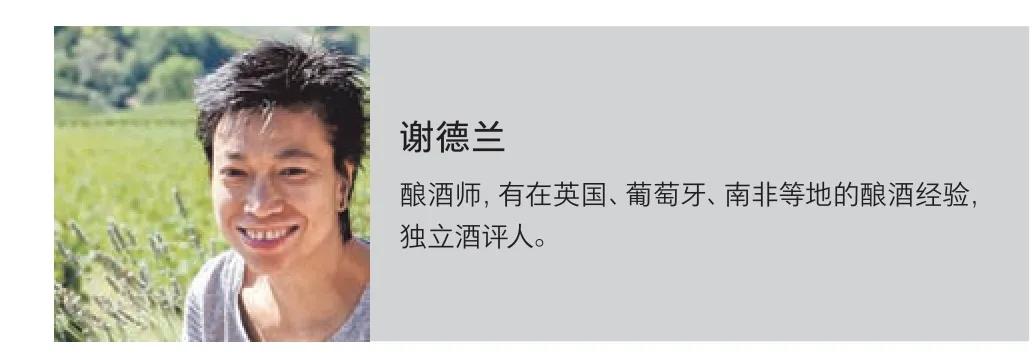皮诺塔吉的守护者:炮名之地酒庄
文 Tersina Shieh 编、译 张恬熙

炮名之地是南非最受尊敬的经典酒庄之一,历史十分悠久。它成立于1659年,并从1973年起,开始在自家庄园装瓶。在过去的120多年中,炮名之地酒庄一直属于同一个家族,如今由家族第四代传人在管理。
One of the most respected classic South African wine estates, Kanonkop has a long history. It was established in 1659 and has been with the same family for over 120 years. The property made the first estate bottle in 1973 and it is now in the hands of the fourth generation.
阿布里·比斯拉尔(Abrie Beeslaar)是炮名之地酒庄有史以来的第三位酿酒师,于2002年加入团队。最近他们在中国香港举办了一系列的品酒活动,阿布里表示:炮名之地酒庄曾尝试种植不同的红、白葡萄品种,包括白诗南、霞多丽、黑皮诺、设拉子等。最后,他们决定专注于种植最适合葡萄园风土的品种—50%皮诺塔吉、35%赤霞珠、7.5%梅洛,以及品丽珠和小味儿多。在125公顷的庄园内,有100公顷都是葡萄园,出产6款红葡萄酒和1款桃红葡萄酒。

无论炮名之地酒庄还是酿酒师阿布里,他们都是皮诺塔吉忠实的支持者。这个葡萄品种是在1925年由南非教授贝霍尔德(Perold)研发而成,他将黑皮诺和神索进行杂交,旨在把这2个葡萄品种最佳的特质相结合。由于神索也被称为Hermitage,所以才有了Pinotage这个名字。早在1941年,炮名之地酒庄就开始种植皮诺塔吉,葡萄园内有一部分南非最古老的皮诺塔吉葡萄藤。当年,酒庄的前任酿酒师比尔·特鲁尔就曾凭借自己酿造的一款1989年份皮诺塔吉葡萄酒,赢得了“年度最佳国际酿酒师”的殊荣,也让皮诺塔吉登上了世界葡萄酒的大舞台。
像所有的葡萄酒一样,皮诺塔吉也有优秀、一般和平庸之分,过度榨取的皮诺塔吉更是品质低劣。1996年,南非皮诺塔吉协会成立,旨在提高皮诺塔吉的声誉和质量。多年的钻研让酿酒师更加了解这个葡萄品种的特色,并采用合适的方法来酿酒。如今,南非的皮诺塔吉葡萄酒风格多样化,从充满活力的桃红葡萄酒、优雅的红葡萄酒,到经典、陈年潜力强且酒体强劲的咖啡风味皮诺塔吉都有。
炮名之地的皮诺塔吉葡萄酒十分经典。葡萄会经过光学技术筛选,然后在开顶的混凝土罐中发酵。发酵初期,每2小时压皮一次,最大限度地提取颜色和果味。随着酒精的增加,压皮次数逐渐减少,以避免提取到苦涩的酚类物质。发酵温度保持在30℃以下,以确保整个发酵过程缓慢且温和,达到完美的效果。
我们品尝了3款2017年份的炮名之地的皮诺塔吉葡萄酒:“开普酿酒师协会葡萄酒”是由最优质的3个橡木桶酿造而成;“庄园皮诺塔吉葡萄酒”的酿酒葡萄分别来自8个不同的葡萄园;“黑标皮诺塔吉葡萄酒”则是由种植于1953年的老藤葡萄酿造。3款酒采用同年份葡萄,同一种方法来酿造,不同之处在于葡萄园的位置、葡萄树的树龄,以及新橡木桶的使用比率,最终每款葡萄酒演绎出了不一样的风格,真的很神奇!
除了“庄园”系列,炮名之地酒庄还生产“卡德特”系列葡萄酒,包括皮诺塔吉桃红葡萄酒、红葡萄酒和混酿葡萄酒,这些都是用比较年轻的皮诺塔吉葡萄酿制而成。阿布里表示:卡德特并不是低品质的葡萄酒,而是以年轻的葡萄酿制的充满活力的葡萄酒。
炮名之地酒庄实行可持续葡萄栽培,这是一个比有机或生物动力种植更广泛的概念,因为除了保证葡萄园的可持续外,它还保护了整个生态系统并保障了工人的福利。阿布里相信:只有在葡萄藤最健康、工人最幸福的时候,酿造出来的才是最好的葡萄酒。炮名之地酒庄就像一个社区,有54名员工在这里工作。他们居住在酒庄内现代化的房屋里,有托儿所、运动设施等,宛如一个大家庭。
如果你想购买炮名之地酒庄的葡萄酒,可以找酒庄在中国的进口商:Shanghai Global Corporation Ltd. and Shanghai Lihuang Trade Co., Ltd.
Kanonkop's cellar master Abrie Beeslaar, the third winemaker of Kanonkop in the history, joined the estate back in 2002, was in Hong Kong recently to conduct a series of tasting. He explained that Kanonkop has tried growing different white and red grape varieties including Chenin Blanc, Chardonnay, Pinot Noir, Shiraz and so on. At the end, they decided to grow only varieties that best suit the property, which are Pinotage (50%) and Cabernet Sauvignon (35%), supported by Merlot (7.5%), Cabernet Franc and Petit Verdot. 100 ha of the 125 ha property is under vines; Six reds and one rosé are produced.
Both Kanonkop and Abrie are true believers of Pinotage. The grape was a cross between Pinot Noir and Cinsault (called Hermitage then, hence the name Pinotage) created in South Africa in 1925 by Professor Perold in an attempt to combine the best quality of the two varieties. Pinotage was first planted at Kanonkop in 1941 and the estate has some of the oldest Pinotage in South Africa. The wine caught the attention of the world when Beyers Truter, then winemaker of Kanonkop, won the tittle International Winemaker of the Year with his Kanonkop 1989 Pinotage.
Like all grape varieties, there are excellent, average and mediocre Pinotage. Some winemakers made over-extracted Pinotage and gave the wine a bad name. In 1996, Pinotage Association was formed with the aim to improve the reputation and quality of the wine. With better understanding of the grape characteristics and more dedicated winemakers, Pinotage today embraces a diverse style from vibrant rosé and elegant red to classic age-worthy and powerful coffee pinotage.
Kanonkop Pinotage is classic. Berries are optically sorted and then fermented in open top concrete tanks with plunging down every two hours for maximum extraction of colour and flavours before fermentation. Plunging down frequency reduce as alcohol increases to avoid extracting the negative phenols. Fermentation temperature is carefully maintained at under 30ºC to ensure a slow even fermentation.
We tasted three 2017 Pinotages: Cape Winemakers Guild which was made from the best three barrels, Estate Pinotage with grapes from eight different vineyard sites, and Black Label Pinotage made from a single vineyard planted in 1953. It was amazing to experience the different expressions of the same varietal wine harvested in the same year and made the same method. The differences are the vineyard sites, age of the vines and the percentage of new oak used.
In addition to the Estate range, Kanonkop also produces the Kadette range from younger Pinotage consisted of Pinotage Rosé, Pinotage Red, and Pinotage Cape Blend. Abrie made the point that Kadette is not lesser quality wine but more vibrant wine from younger vines.
Kanonkop practices sustainable viticulture which is a broader concept comparing to organic or biodynamic farming as it also takes care of the entire ecosystem and the welfare of workers. Abrie believes the best possible wine can only be made when the vines are the healthiest and the workers are the happiest. Kanonkop is a community for the 54 people working in the estate. Those living in the farm enjoy modern housing, day-care centre and sporting facilities.
Kanonkop is distributed by Shanghai Global Corporation Ltd. and Shanghai Lihuang Trade Co., Ltd. in China.

